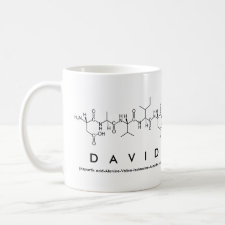
Authors: Simon RL, Spivak DA
Article Title: Performance analysis of molecularly imprinted polymers for carboxylate and aminophosphate templates using commercially available basic functional monomers.
Publication date: 2004
Journal: Journal of Chromatography B-Analytical Technologies in the Biomedical and Life Sciences
Volume: 804
Issue: (1)
Page numbers: 203-209.
DOI: 10.1016/j.jchromb.2003.12.040
Abstract: A survey of commercially available amine-based monomers for binding and selectivity of carboxylate and phosphonic acid templates has revealed that the best selectivity is found for the pyridine-based monomers, while the highest affinity was found for 2-(dimethylamino)ethyl methacrylate (2-DEMA, 1). In fact, a more general finding is that selectivity is higher for aromatic amine-based monomers even though affinity remains higher for aliphatic amine-based monomers. An attempt to combine the optimal properties of these two classes of amine monomers, i.e. 2-vinylpyridine (2-VPY, 2), and 2-DEMA by using both simultaneously in a single imprinted polymer resulted in an MIP whose properties were dominated by the aliphatic amine- based monomer 2-DEMA. A controversy between the two commercially available vinylpyridine monomers, 2-VPY and 4- vinylpyridine (4-VPY, 3), was investigated, revealing that neither monomer is generally better for molecular imprinting; rather, the choice of 2-VPY or 4-VPY is template specific (although the preponderance of data tends to frequently favor 4-VPY). Phosphonic acid templates proved to be less successful as templates for molecular imprinting versus carboxylate, functionalized templates, although binding was obtained and shown to be controllable via an ion-exchange process. (C) 2004 Elsevier B.V. All rights reserved



Join the Society for Molecular Imprinting

New items RSS feed
Sign-up for e-mail updates:
Choose between receiving an occasional newsletter or more frequent e-mail alerts.
Click here to go to the sign-up page.
Is your name elemental or peptidic? Enter your name and find out by clicking either of the buttons below!
Other products you may like:
 MIPdatabase
MIPdatabase









